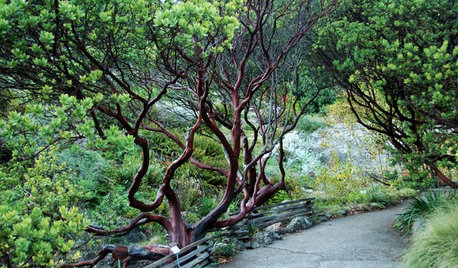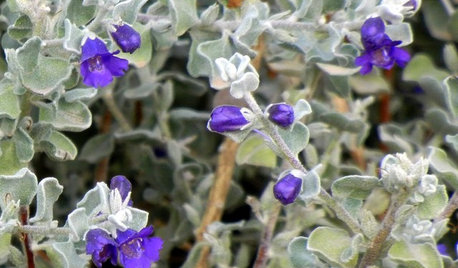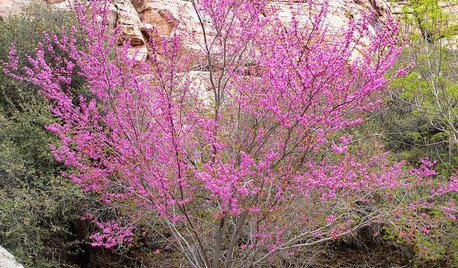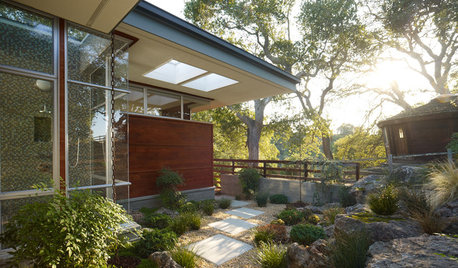House plant excess water drainage
henrikn
11 years ago
Related Stories

BATHROOM DESIGNConvert Your Tub Space Into a Shower — Waterproofing and Drainage
Step 4 in swapping your tub for a sleek new shower: Pick your waterproofing materials and drain, and don't forget to test
Full Story
GARDENING GUIDES8 Unthirsty Plants Help You Save Water in Style
Spend less effort and money on your landscape with drought-tolerant and native plants that liven up your yard
Full Story
CONTAINER GARDENSContainer Garden Basics: How and When to Water Potted Plants
Confused about soil moisture, the best time to water and what watering device to use? This guide can help
Full Story
GARDENING FOR BUTTERFLIESGreat Design Plant: Parry Manzanita Stands Out in Low-Water Gardens
Make a dramatic architectural statement and feed wildlife in woodlands and more with Arctostaphylos manzanita
Full Story
GARDENING GUIDESGreat Design Plant: Violet Silverleaf Thrives on Scant Water
Purple flowers transform silvery, sun-loving Leucophyllum candidum, while its easy care may change your gardening routine
Full Story
HEALTHY HOMEHow to Choose a Home Water Filtering System
Learn which water purification method is best for your house, from pitchers to whole-house setups
Full Story
GARDENING GUIDES10 Top Native Plants for Northern California Gardens
Enjoy a fuss-free, water-wise garden by growing plants naturally in tune with the climate and wildlife of Northern California
Full Story
GARDENING GUIDESGreat Design Plant: Try Blue Bells for Blooms in Dry Soil
This shrub’s violet-blue flowers and silvery foliage brighten low-water gardens all year long
Full Story
SAVING WATERXeriscape Gardens: How to Get a Beautiful Landscape With Less Water
Conserve water and make gardening much easier with the xeriscape approach’s 7 principles
Full Story
LANDSCAPE DESIGNSoak It Up: How to Manage Stormwater in Your Landscape
Permeable paving, gravel beds and planted areas in your yard can absorb and cleanse stormwater runoff. Here's how it works
Full StoryMore Discussions











tapla (mid-Michigan, USDA z5b-6a)
henriknOriginal Author
Related Professionals
Danbury Landscape Architects & Landscape Designers · Grand Haven Landscape Architects & Landscape Designers · Bedford Heights Landscape Contractors · Flagstaff Landscape Contractors · Lorain Landscape Contractors · Olympia Landscape Contractors · Oxnard Landscape Contractors · Salem Landscape Contractors · Santa Ana Landscape Contractors · Tavares Landscape Contractors · Wailuku Landscape Contractors · Lauderdale Lakes Landscape Contractors · Clinton Township Interior Designers & Decorators · Mount Laurel Interior Designers & Decorators · Nashville Interior Designers & Decoratorsrina_Ontario,Canada 5a
tapla (mid-Michigan, USDA z5b-6a)
rina_Ontario,Canada 5a
dellis326 (Danny)
henriknOriginal Author
dellis326 (Danny)
henriknOriginal Author
dellis326 (Danny)
henriknOriginal Author